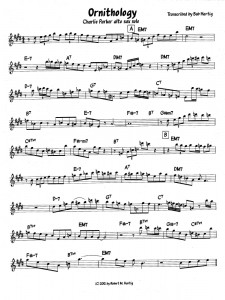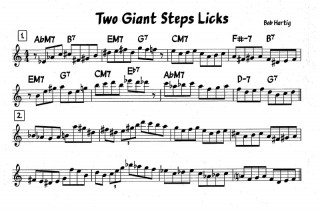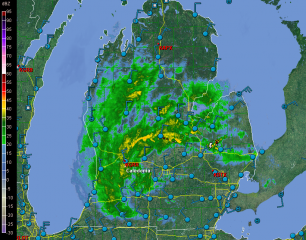Beginning with the new year, I’ve spent a number of Monday nights practicing with West Michigan’s newest (that I’m aware of) jazz venture: Big Band Nouveaux. Under the leadership of Grand Rapids tenor saxophonist Michael Doyle, this band is a collective of top-drawer jazz musicians that absolutely kicks butt.
Some months ago, Mike contacted me about a project he had up his sleeve. Would I be interested in participating? Mike is a great musician, so naturally he immediately got my attention, but I have to confess that when he mentioned big band music, I felt lukewarm. The big band format has never been my passion. Nothing against it, but I’ve always leaned toward smaller combos: more freedom, more flexibility, more interplay between musicians. That’s just my preference.
But Big Band Nouveaux is a different breed. It is unquestionably the most incendiary big band I’ve ever played in, with great charts that offer plenty of room for soloists to stretch and with some tremendously talented musicians in the lineup: Paul Lesinski, Fred Knapp, Isaac Norris, Louis Rudner, Mark Wells, and Arnaldo Alcevedo, just to name a few. Veteran Blue Lake Radio jazz announcer Lazaro Vega is honing his trumpet chops with the brass section; our fearless leader, the man in the pork pie hat, Mike, is playing first tenor; and Tyler Beer and I are making the alto sax charts happen. The arrangements are uber-hip, and playing with this ensemble has been more fun than I ever imagined.
Last Monday we recorded some demo tracks for the band. (Big thanks to Paul Lesinski for bringing in his recording equipment and then doing the mixdowns during the course of this week. Great job, Paul!) And I know that Mike is doing his best to hustle up some gigs for the band. We’ve still got our work cut out for us in terms of building our repertoire, but keep your eyes out for this molten-hot outfit. It will be making the scene in the coming months, and you definitely want to catch it when it hits the clubs.




